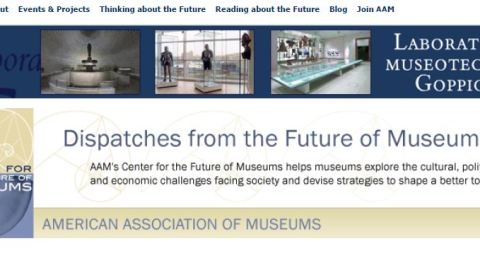This is part three in an ongoing series of essays sharing my thoughts on museum economics, training and compensation. Catch up with parts one (The Museum Sacrifice Measure) and two (What is the Fair Market Value of a Museum Job). I had intended to tackle “how museums can make jobs ‘fair’” or the economics & ethics of internships next, but I got sidetracked by the article I discuss below. I’ll return to those topics in future posts.
Last week Mark Stryker published an article in the Detroit Free Press titled “DIA pay hikes raise eyebrows, anger politicians.” I hope you read the full article for yourself (it is brief) but to summarize:
- The DIA recently announced pay increases for its director (13% increase, to $514k/year) and executive vice president/chief operating officer (36% increase, to $369k/year)
- The director took significant pay cuts post-recession, and his current compensation is still below its 2008 amount, and the EVP/COO has added responsibilities to go with the additional pay
- Voters recently approved a property tax to help keep the DIA afloat
- A coalition of private foundations, government agencies and the DIA have proposed a “grand bargain” in which pledges of $816 million buy DIA collections belonging to the city to shield them from bankruptcy proceedings
- City workers are taking hefty cuts to pay, pensions and health care as the city tries to meet its financial obligations and continue to deliver basic services
The article quotes county executives as saying “recent media reports about the handsome pay increases not only create the perception among some voters of being hoodwinked, but that the timing couldn’t be worse given the intense focus on safeguarding the collection of the DIA in the midst of Detroit’s historic bankruptcy.”
This story is a good jumping off point for examining two arguments playing out in the larger nonprofit realm about executive pay. The first is about what constitutes fair compensation for nonprofit leaders. Iconoclast Dan Pallotta maintains that our society disfunctionally devalues nonprofit work. In fact, he comes right out and says you should be able to get rich [working] in charity. “There should be no limit to the amount of money a person can earn making the world a better place, so long as the money is commensurate with the value they produce.” DIA chairman Gene Gargaro evidently feels DIA’s leadership meets that criteria, as he is quoted in the Stryker article as saying “…we — meaning the citizens of metro Detroit and the state of Michigan — are getting a terrific return for what they’re paid.” The DIA director’s salary does put him solidly in the top 1% of household incomes in the US, but maybe that is the price of having a first-class museum, even in a city where the median household income is about $48k, $4k below the national median.
What is the return on higher salaries? Pallotta argues that unfettered pay would enable nonprofits to “recruit from a more valuable talent pool, and it motivates the people you have recruited to produce more value than they would without it.”
My previous essays in this thread explored the forces that drive down museum salaries in general: an oversupply of highly qualified people essentially underbidding each other for jobs; the fact that museum work is so attractive many people are willing to do it for free (whether they do so in the guise of interns, hoping to work their way into a paying position, or as volunteers happy to contribute to society through their labor). Which begs the question, why would Pallotta’s logic apply to CEO compensation, and not to all positions in a nonprofit?
And if it does apply, do you (readers) believe that
a) Museums would have access to “a more valuable talent pool” if they paid more. (Would DIA have an even better director if it paid $1M, or $2M?) That would imply that museums, with their current pay scale, are settling for second best in their current employees, because the real talent is working for sectors that pay more. (Yeah, I thought you wouldn’t like that conclusion.)
b) The DIA leadership, or the leadership of your museum, or any museum staff, would work proportionately harder for higher pay. (36% increase in work time? 36% increase in good ideas?)
I’m not willing to buy either of those arguments, any more than I believe that for $78M Oracle gets a CEO who is worth $28M more than it could get for $50M. Or that Leslie Moonves really does $2.12/second worth of work for CBS. (Then again, I wouldn’t have believed that Willie Nelson’s braids were worth $37,000, until they actually sold for that amount, thus illustrating the arbitrary nature of value in our society.)
On the other hand, if we believe, as a society, that the top leaders of nonprofits shouldn’t earn as much as their for-profit peers, won’t that attitude have a chilling effect on everyone else who works at a museum as well? If we are concerned about the negative effect of low salaries on recruiting a diverse pool of talent into museums, shouldn’t we support the premise that you should be able to get rich being a museum director?
Which brings us to the other current hot issue related to this story: the growing movement that contends that executive compensation, relative to other staff, is an ethics issue. In a recent post for Nonprofit Quarterly, Ruth McCambridge notes “Salary equity in nonprofits is something that even the most damning of newspaper exposés of nonprofit CEO compensation rarely address. Clearly, the wealth divide is one of the most high tension issues of the decade…but the nonprofit sector, though it may participate in discussions of salary ratios for the for-profit sector, has not generally taken the issue up as its own.” She goes on to issue the following challenge: “Should this sector more thoughtfully declare itself as supportive of a reasonable ratio between highest- and lowest-paid workers? And shouldn’t it establish a measurable standard of practice that will make the sector beacons for the issue?”
Now, Stryker didn’t address the salaries of the rest of the workers at the DIA, but I doubt their pay went up by 13-36% in synch with that of their leaders. His article lists the top salaries for 15 directors of major museums, ranging from MOMA (at $1.8 million) to Toledo Museum of Art ($437,800). I regret that the recent National Salary Survey I helped to conduct did not report on leader-to-lowest-paid-worker ratio (and hope to address that in future research). But I’ll bet that in some of the museums on Stryker’s list that the ratio approaches 100:1. This is smaller than the 354:1 ratio of the compensation of CEOs in the S&P 500 index in 2012, but considerably higher than the 20:1 limit apocryphally endorsed by Gilded Age tycoon J.P. Morgan. And ratios aside, it doesn’t address the issue of paying a living wage for the area in which the museum is located. (Another issue I have fingered for a future survey.)
The point is, don’t read this article as being about the DIA. Think about the questions it raises about all museums in all of the US. Detroit may be at the extreme end of the range of economic distress, but it is a microcosm of forces at work in communities across the nation. During the first two years of recovery from the crash of 2008, people in the top one percent of household income captured 121% of the economic gains*. The depth of Detroit’s pain throws the choices posed by inequity of wealth into stark relief, but the questions are the same everywhere.
As museums, together with their communities, begin to climb out of economic hole we fell into, we should examine the ethics of how we spend the money we regain, including how we pay staff. And as we do so, I hope we give more attention to staff in basic roles both behind the scenes and in the front-of-house than to headline-generating incomes in the executive suite. Inadequate salaries at the lowest rungs of the career ladder are a barrier to recruiting and retaining staff who can’t afford to make an economic sacrifice to work in a museum. When the maintenance and security staff, exhibit technicians and educators are making not only a living wage but a fair wage, I’m willing to entertain Mr. Pallotta’s proposal about unfettered gains at the top.
*No this is not a typo. Top 1% incomes recovered all of their losses and then some, while income in the bottom 99% continued to shrink.









I'm pretty sure most readers are aware of the thought-provoking TED talk by Dan Pallotta on the issue above: The way we think about charity is dead wrong (Change charity for museums):
http://www.ted.com/talks/dan_pallotta_the_way_we_think_about_charity_is_dead_wrong?language=en
I cannot comment on the DIA and the performance of its directors, knowing very little about it, but I think compensation cannot be seen without taking into account performance and other value drivers.